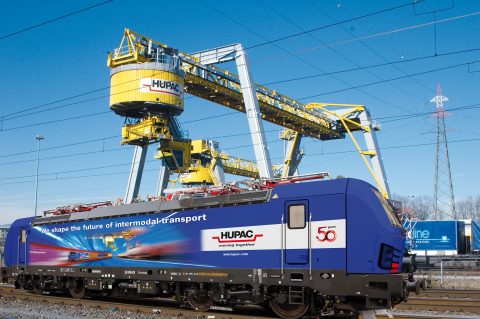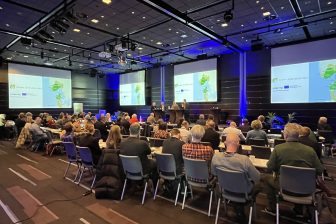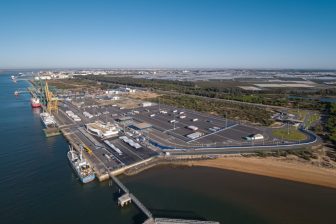
Hupac prepares for Swiss rail without subsidies
Hupac has been preparing itself for the abolition of the Swiss subsidies for combined transport at the end of 2023. In order to compensate for the abolition without losing competitiveness compared with road, it has aimed at lower production costs and more payload per train, the intermodal transport operator said.
“The parameters requiring a train weight of 2000 tonnes with one engine, 740 meter length and a 4-meter profile, however, will not be completely available on the freight corridor Rotterdam-Genoa by 2024. Enforcing these parameters on the entire corridor is a central responsibility of transport policy, as well as the introduction of internationally coordinated train path planning and traffic coordination.”, Hupac stated.
Reduce track access charges
“Recent calculations have shown that approximately two thirds of current government subsidies for intermodal transportation can be reduced by improvements in productivity with the Gotthard/Ceneri base tunnels and the 4-meter corridor. One third would still have to be granted under the current circumstances, even after 2024. A viable alternative would be to reduce the current very high track access prices for transit through Switzerland to the level of the corridor countries – a simple, non-discriminatory solution with little administrative effort, which would send an immediate signal in favour of modal shift.”
Hupac further pleads for subsidy equivalence between unaccompanied combined transport and transport over road from 2024. “An even playing field is necessary to prevent opportunity-driven shifts from the former to the latter. Another important measure to support modal shift is the continuation of the noise bonus for low-noise freight wagons after 2020 to compensate for the high operating costs: environmentally friendly, quiet freight cars must not be placed in a worse position than noisy rail cars, which have lower operating costs.”
Hupac in 2018
Hupac saw a 5.2 per cent increase in traffic volumes during the first quarter of 2017. Transalpine intermodal transports were particularly successful with a surge of 10.7 per cent, the intermodal transport operated reported.
The frequency of many trains has been increased and several new connections have been introduced, such as Zeebrugge Cobelfret-Novara, Hannover-Novara, Singen-Cremona and Rotterdam/Duisburg-Istanbul, in addition to new block trains in the Company Shuttle business unit. Transports to Iran, Azerbaijan and Turkmenistan were handled for the first time.
A priority for the current year is the expansion of maritime hinterland services, Hupac said. Moreover, it plans to pursue several terminal projects, situated in Milano Smistamento, Piacenza and Brescia in Italy, Gateway Basel Nord in Switzerland and Brwinów/Warsaw in Poland. These terminals are expected to be completed during the period 2020 to 2022. Hupac will also invest in the RTC Geleen terminal in the Netherlands in response to deficits in the economic areas of Rotterdam, Cologne/Duisburg and Mannheim. Furthermore, Hupac has entered into a future-oriented cooperation with HGK concerning the Köln Nord terminal.
Challenges ahead
The operator is expecting some challenges ahead due to construction sites for the expansion of the feeder routes to the Gotthard base tunnel. However, these will lessen by the time the 4-meter corridor opens up, Hupac anticipates. Hupac managing director Beni Kunz: “With the start-up of the 4-meter corridor via Gotthard and Ceneri in 2021 we anticipate considerably more efficiency and reliability in favour of a further shift of goods transportation from road to rail.”





